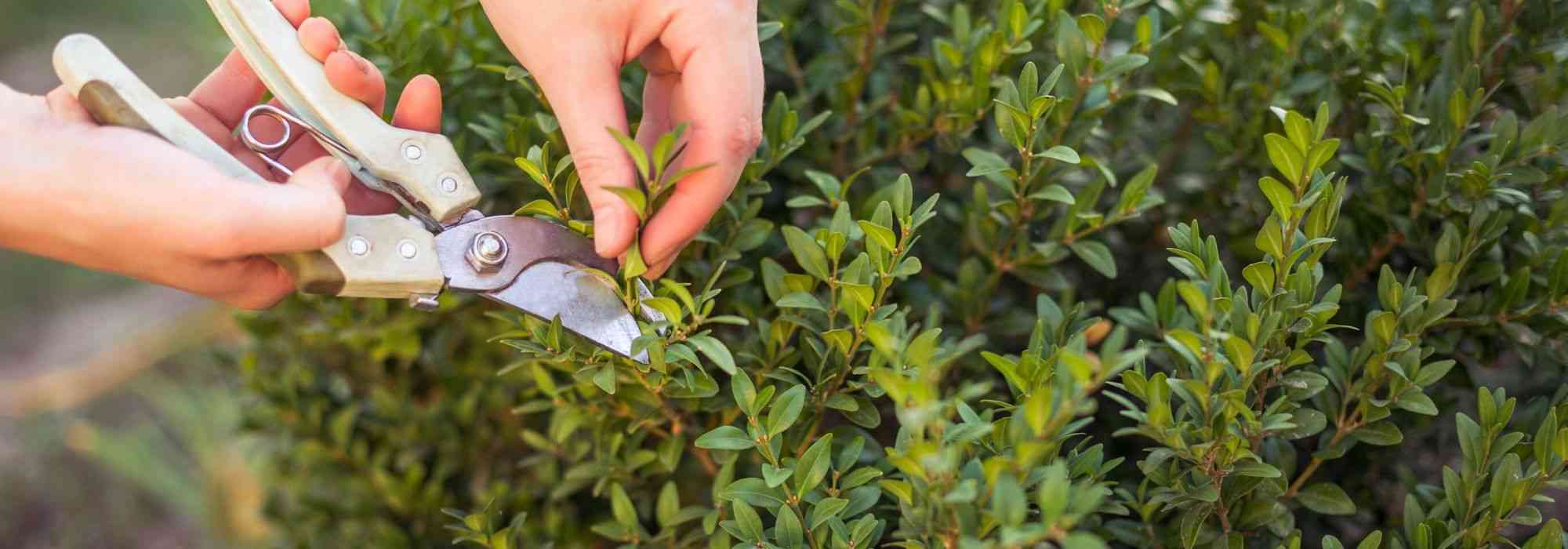
Boxwood: when and how to prune?
All our tips for successful pruning
Contents
Classic and timeless, boxwood (buxus sempervirens in Latin) is a handsome bush characteristic of French formal gardens. With its compact, evergreen habit, boxwood can be trained with rigour and perseverance. Indeed, it tolerates regular and drastic pruning very well, making it the king of topiary bushes. Highly prized for all types of sculptures (plant, animal, geometric or more whimsical), it is also suitable for forming low hedges or hedges clipped into regular shapes. The boxwood ‘ball’, already pruned, is much appreciated by gardeners as it is already shaped but requires maintenance pruning.
When and how to prune boxwood? How to shape a beautiful ball or a hedge? How to prune boxwood after an attack by box-tree moth?Discover all our tips and explanations to master boxwood pruning!
When to prune boxwood?
As a general rule, pruning of box is preferably carried out at the end of spring, around mid‑June, after flowering, in the evening or in the morning, although box can be pruned almost all year round, for example a second time in autumn, especially for box trained as topiary. It will tolerate being pruned two to three times a year. Do not prune during frost or periods of extreme heat. More specifically:
- Formative pruning is carried out on young specimens during the first three years in spring
- Maintenance pruning keeps an attractive shape and is carried out from May until late September
- Rejuvenation pruning of older box is preferably also carried out in spring
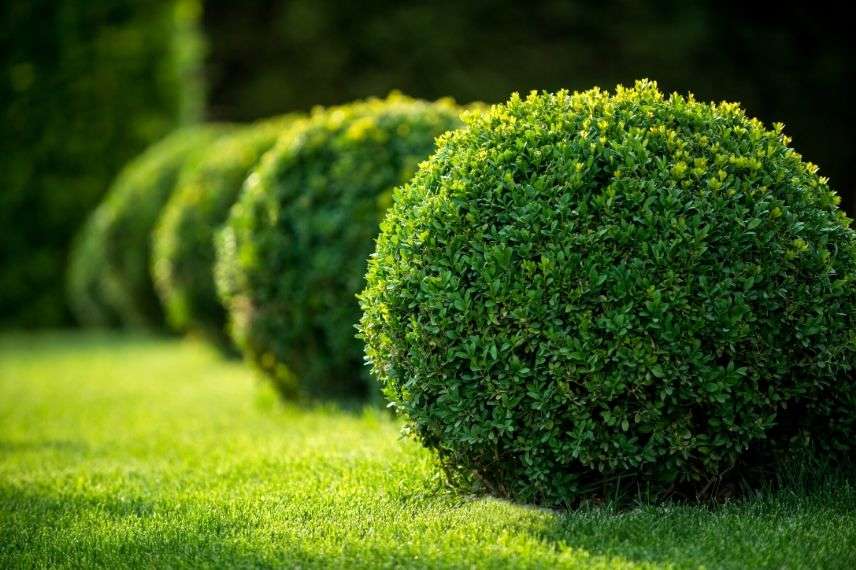
Read also
Planting a boxwood borderHow to prune boxwood?
Boxwood is one of the plants that best tolerate drastic, repeated pruning; this is one of its main qualities. Depending on size and volume of your boxwood, you can use a pruning shear for finer work or a simple shear — for topiary in particular — while for larger specimens with complex shapes or for hedges, use a mechanical hedge trimmer.
Some preliminary tips
According to the size and volume of your boxwood,
- Tools must be well sharpened, and disinfected with 90° alcohol, to avoid transmitting diseases from one plant to another
- Make neat, clean pruning cuts
Formative pruning
In the first three years, while boxwood is still young, it is the time to give it the desired silhouette (pyramid, sphere…) by carrying out formative prunings. As boxwood growth is particularly slow, be patient: allow around 5 years to obtain a sphere or cone from a young plant, about ten years for a more complex shape.
- First year: reduce the shoots by cutting to 5 or 10 cm from soil with a shear to establish boxwood’s framework according to the desired shape; select and keep a few main structural branches
- Second year: prune back by 5 cm only the longest shoots that hinder the desired shape to allow vegetation to develop
- Third year: shape is set, simply prune the tips of the young shoots
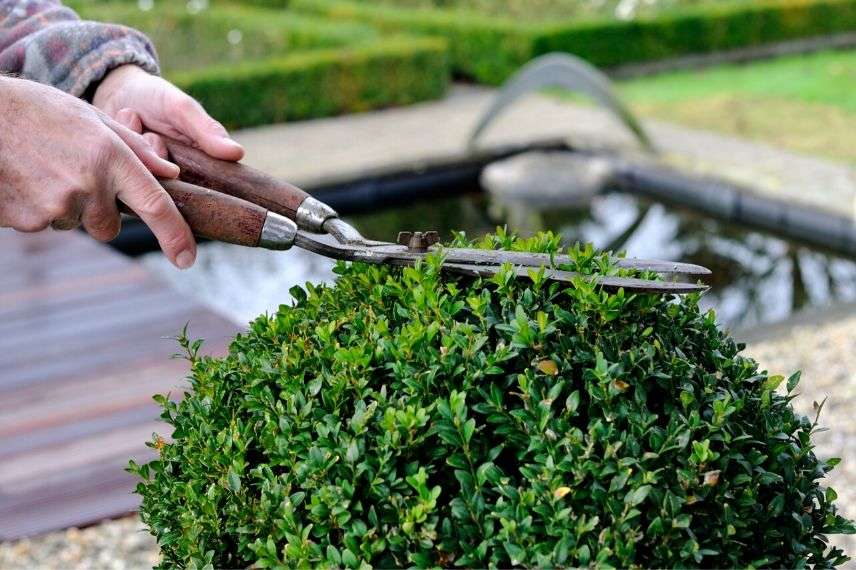
Maintenance pruning
Once the desired shape is obtained, in following years boxwood will only need lighter prunings, which will help maintain a balanced, regular shape:
- Remove branches that grow in an unbalanced or disproportionate way
- For hedges: use string as a guide; slide the shear along the cord to cut. To create straight forms, don’t hesitate to use a spirit level, plumb line and set squares.
Pruning boxwood into a sphere
In 4 or 5 years you will obtain beautiful spheres. Start pruning from the top, then work down the sides, and prune while moving all around the bush.
How to prune boxwood for topiary?
Boxwood adapts to the shape you want. You will probably need metal frames to create delicate shapes. To do this, use a wire frame to place over your boxwood. Simply cut the shoots that escape through the mesh to obtain the desired shape. Patterns, templates for pruning boxwood and pruning guides are available commercially.
- More tips in our advice sheet “Topiary: when and how to prune them?”
Pruning old boxwood
This rejuvenation pruning is carried out in spring. It allows old boxwood that have lost their harmonious shape and begun to thin out to regain a new lease of life. Don’t worry, boxwood easily tolerates severe pruning:
- Using a hand saw, cut back boxwood to 40 cm from soil
- Fork soil in with well-rotted compost and water to ensure recovery
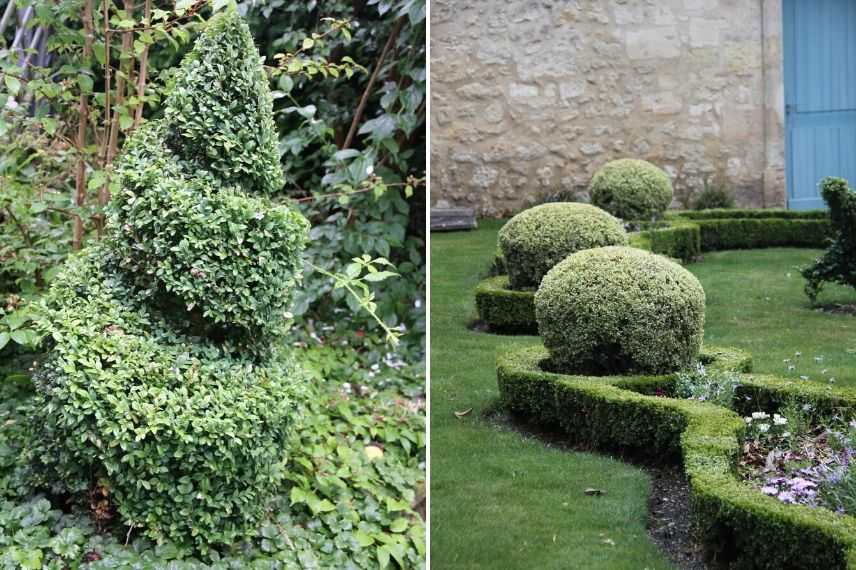
Boxwood pruned into topiary shapes, spheres or low hedges
Discover other Buxus - Boxwood
View all →Available in 1 sizes
Available in 4 sizes
Available in 4 sizes
Available in 1 sizes
Available in 1 sizes
Available in 1 sizes
Available in 1 sizes
Available in 2 sizes
How to prune boxwood after an infestation by the box tree moth?
Long considered indestructible, boxwood is nevertheless a victim of the box tree moth, a caterpillar that causes considerable damage, weakening or destroying many box trees each year. For this reason it is planted less and less, gardeners increasingly turning to less susceptible equivalent bushes. To limit spread, uproot the most affected young plants. It is still possible to try to save affected boxwood.
Pruning of diseased boxwood should be carried out from late summer until the end of September: dry weather helps limit risk of contamination and will aid healing of pruning wounds before winter.
- First prune healthy parts
- With well-disinfected tools, cut dead or diseased shoots and then burn them
- Ventilate the interior of the branches: the box tree moth caterpillar tends to avoid light, which will limit its development
- Subscribe!
- Contents
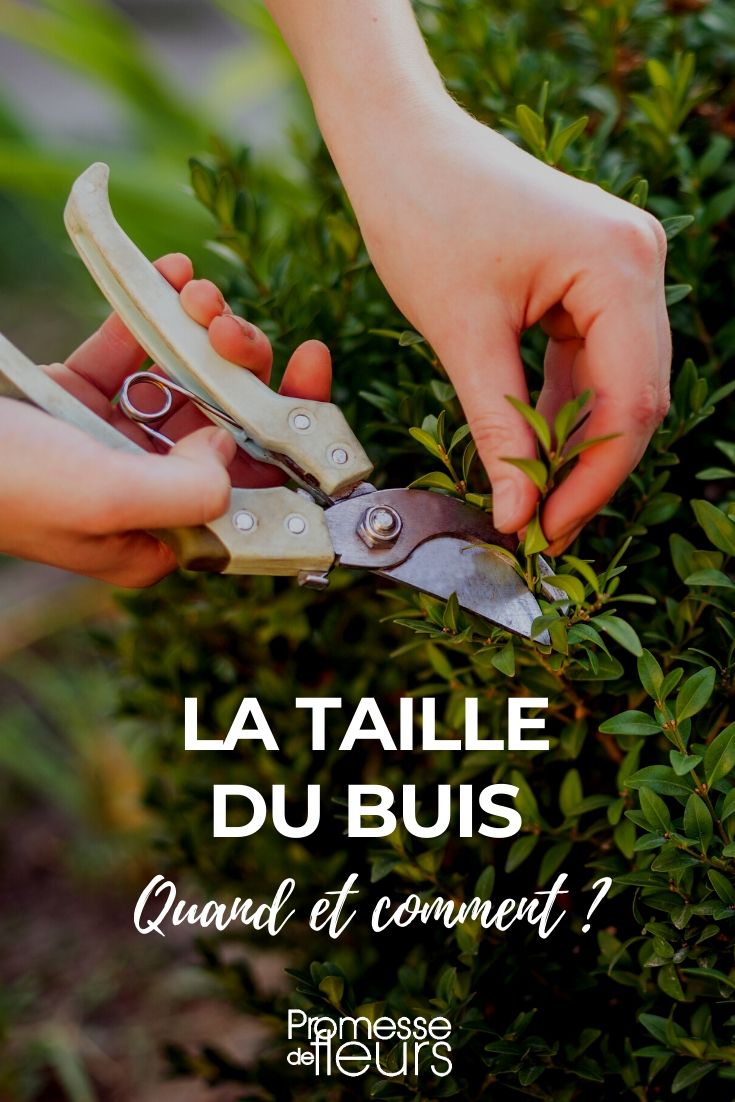
































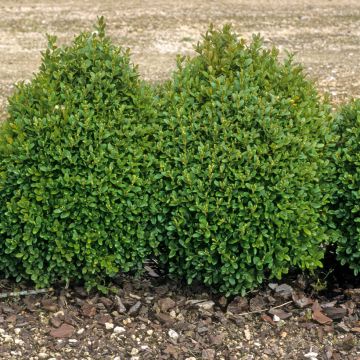
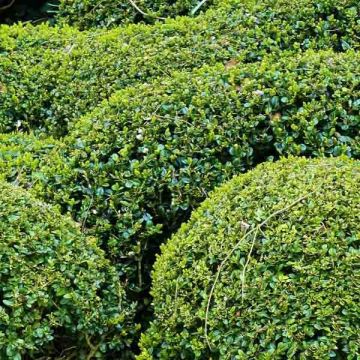
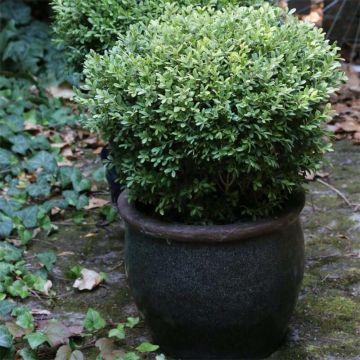

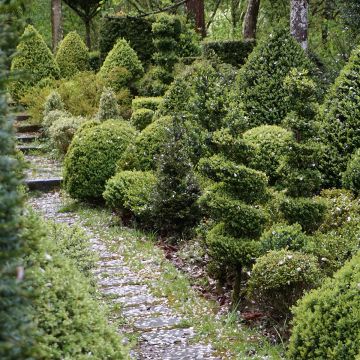
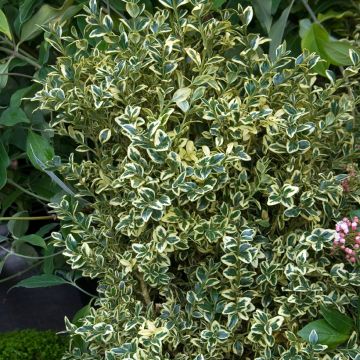
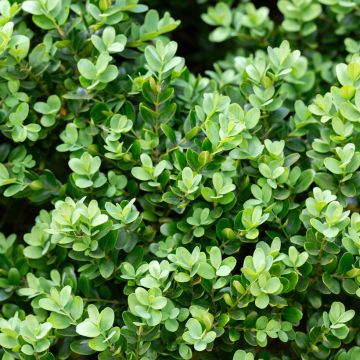
Comments